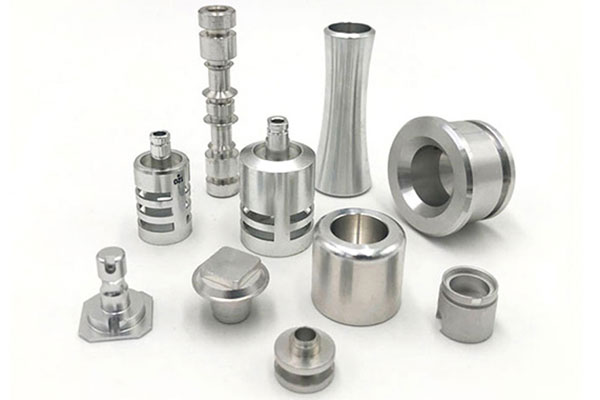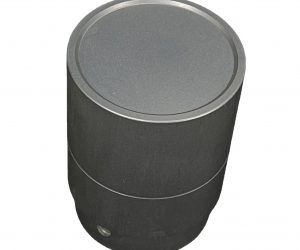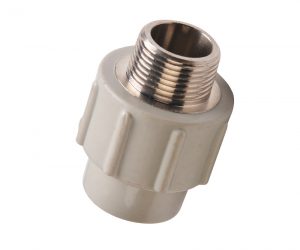1. Introduction: The Transformative Power of Sheet Metal Prototypes in Precision Manufacturing
In the ever - evolving field of precision manufacturing, sheet metal prototypes have emerged as a game - changer. These prototypes are at the heart of the manufacturing process, serving as the crucial link between a product's initial design and its large - scale production. Sheet metal prototypes offer an array of benefits, including high precision, cost - effectiveness, and rapid production. As industries such as aerospace, automotive, and medical devices strive for greater innovation, the role of sheet metal prototypes becomes increasingly significant.
High precision is one of the most notable advantages of sheet metal prototypes. In precision manufacturing, the tolerance requirements can be extremely tight. For example, in the aerospace industry, components need to be manufactured with tolerances in the range of micrometers. Sheet metal prototypes can meet these high - precision demands through advanced manufacturing techniques such as laser cutting and precision stamping. A study by a leading research institute in manufacturing technology found that sheet metal prototypes produced using laser cutting technology can achieve a dimensional accuracy of ±0.1mm, which is far better than many traditional prototyping methods.
Cost - effectiveness is another key factor. Developing a new product can be a costly affair, especially when it comes to tooling and initial production runs. Sheet metal prototyping can significantly reduce costs in the initial stages. Since sheet metal is a relatively inexpensive raw material compared to some other materials used in prototyping, such as certain high - grade alloys or plastics, it provides a cost - efficient solution. Moreover, the tooling costs for sheet metal prototyping are often lower, especially when using flexible manufacturing processes like waterjet cutting, which doesn't require expensive custom dies for every prototype.
Rapid production is also a major advantage. In today's fast - paced market, getting a product to market quickly is crucial. Sheet metal prototypes can be produced in a relatively short time frame. For instance, with modern computer - aided design (CAD) and computer - aided manufacturing (CAM) technologies, a design can be quickly transferred into a physical prototype. A case study in the automotive industry showed that by using sheet metal prototyping, a car manufacturer was able to reduce the time from concept to prototype by 30% compared to traditional prototyping methods, allowing them to bring new models to market faster and gain a competitive edge.
In the aerospace industry, sheet metal prototypes are used to test the aerodynamic performance of new aircraft components. They help engineers to identify design flaws early on and make necessary adjustments before full - scale production. In the automotive industry, sheet metal prototypes are essential for developing new car body designs, ensuring safety, and improving fuel efficiency. In the medical device industry, they are used to create prototypes of surgical instruments and implantable devices, where precision and biocompatibility are of utmost importance.
As we move forward, the role of sheet metal prototypes in precision manufacturing is only going to grow. With the continuous development of new manufacturing technologies and materials, sheet metal prototyping will become even more precise, cost - effective, and faster. In the following sections, Yigu Technology will delve deeper into the manufacturing processes, materials, and quality control aspects related to sheet metal prototypes, exploring how they contribute to the overall precision manufacturing landscape.
2. Technical Foundations of Sheet Metal Prototyping
2.1 Core Processes for Achieving Precision
Sheet metal prototyping relies on a set of core processes to transform flat metal sheets into intricate and functional components. One of the key processes is laser cutting. This technology uses a high - powered laser beam to cut through metal with extreme precision, achieving tolerances as tight as ±0.05mm. For Yigu Technology instance, in the aerospace industry, laser - cut titanium brackets are used to ensure the structural integrity of aircraft. Another important process is CNC bending. Computer - controlled machines accurately bend the metal to the desired angles, enabling the creation of complex shapes. In the automotive sector, CNC - bent steel parts are commonly used in vehicle frames. Stamping is also widely employed. Hydraulic presses apply force to shape the metal, allowing for the mass production of identical parts. In the medical field, stamped stainless - steel components are used in surgical instruments.
Let's take a closer look at the comparison of these core processes in terms of precision, production speed, and cost in the following Yigu Technology table:
| Process | Precision (Typical Tolerance) | Production Speed | Cost (Relative) |
| Laser Cutting | ±0.05 - 0.1mm | Moderate, depends on material thickness | Medium - High (due to equipment cost, but cost - effective for small - batch, high - precision work) |
| CNC Bending | ±0.1 - 0.3mm | Varies based on complexity, generally medium - speed | Medium (equipment and programming costs) |
| Stamping | ±0.2 - 0.5mm (for high - precision stamping, can be better) | High, suitable for mass production | High initial tooling cost, low per - unit cost for large volumes |
As shown in the table, each process has its own characteristics. Laser cutting excels in precision, making it ideal for applications where tight tolerances are crucial, such as in the electronics industry for manufacturing circuit board components. CNC bending offers flexibility in creating complex shapes, which is highly valued in industries like furniture manufacturing, where unique designs are often required. Stamping, on the other hand, is the go - to process for mass production due to its high - speed production capabilities, as seen in the production of metal cans for the food and beverage industry.
2.2 Material Selection and Its Impact
The choice of material is a critical factor in sheet metal prototyping. Different materials offer varying properties that make them suitable for different applications. Aluminum is a popular choice due to its lightweight nature and high corrosion resistance. It is widely used in the aerospace industry for manufacturing aircraft parts. Stainless steel, on the other hand, is known for its durability and resistance to heat and chemicals. It is commonly used in the medical and food - processing industries. Cobre and its alloys are valued for their excellent electrical conductivity, making them ideal for use in the electronics industry.
To better understand the impact of material selection, let's consider the following examples and their specific property requirements:
| Industry | Required Material Properties | Common Materials Used |
| Aerospace | High strength - to - weight ratio, corrosion resistance | Aluminum alloys, Titanio alloys |
| Medical | Biocompatibility, corrosion resistance, sterilizability | Stainless steel (e.g., 316L), Titanium |
| Electrónica | High electrical conductivity, thermal conductivity | Cobre, Aluminum (for heat sinks) |
| Automoción | High strength, formability, cost - effectiveness | Steel (various grades), Aluminum |
In the aerospace industry, the use of aluminum alloys in sheet metal prototypes can significantly reduce the weight of aircraft components without sacrificing strength. For example, the fuselage skin of many commercial aircraft is made of aluminum alloys. In the medical industry, stainless steel 316L is a preferred material for surgical instruments because it is not only highly resistant to corrosion but also biocompatible, meaning it won't cause adverse reactions in the human body. In electronics, copper is used in printed circuit boards (PCBs) due to its superior electrical conductivity, which ensures efficient transmission of electrical signals.
Moreover, the cost of materials also plays a role in material selection. For Yigu Technology example, while titanium offers excellent properties such as high strength and corrosion resistance, its high cost limits its use to applications where its unique properties are indispensable, like in aerospace and high - end medical implants. In contrast, aluminum and steel are more cost - effective options for many general - purpose applications in the automotive and consumer goods industries. The choice of material in sheet metal prototyping is a delicate balance between properties, cost, and the specific requirements of the end - use application.
4. Sheet Metal Prototyping vs. Other Manufacturing Methods: A Comparative Analysis
When considering the best manufacturing method for a project, it's essential to compare sheet metal prototyping with other common techniques. Let's take a look at how sheet metal prototyping stacks up against 3D printing y injection molding across several key parameters.
| Parameter | Sheet Metal Prototyping | Impresión 3D | Moldeo por inyección |
| Material Waste | Moderate (10 - 20%) | Low (<10%) | High (30 - 50%) |
| Lead Time | Short (1 - 2 weeks) | Very short (1 - 3 days) | Long (4 - 6 weeks) |
| Tooling Cost | Moderate | Low | High |
| Acabado de superficie | Excellent | Varies | Excellent |
| Design Complexity | Moderate | High | Low |
4.1 Material Waste
In sheet metal prototyping, material waste is typically in the range of 10 - 20%. This is due to the nature of the cutting and forming processes, where some material is inevitably removed or left as scrap. For Yigu Technology example, when laser cutting a complex shape from a sheet of metal, the off - cuts around the perimeter of the shape contribute to the waste.
3D printing, on the other hand, has a very low material waste rate, often less than 10%. Since it builds objects layer by layer, material is only used where it's needed. For instance, in fused deposition modeling (FDM) 3D printing, the plastic filament is extruded precisely to form the object, minimizing waste.
Injection molding, however, has a high material waste rate of 30 - 50%. This is because a significant amount of material is used to create the runners, gates, and sprues in the mold, which are usually discarded after the injection process.
4.2 Lead Time
Sheet metal prototyping has a relatively short lead time of 1 - 2 weeks. Once the design is finalized and the manufacturing process begins, modern manufacturing technologies can quickly produce the prototype. For example, with CNC - controlled machines, the programming can be done swiftly, and the actual cutting and forming operations can be completed in a matter of days, with some additional time for finishing and quality checks.
3D printing offers an even shorter lead time, often as little as 1 - 3 days. The digital nature of the process means that once the 3D model is ready, the printer can start building the object immediately. This makes it an ideal choice for projects where time is of the essence, such as rapid prototyping for a trade show demonstration.
Injection molding has a much longer lead time of 4 - 6 weeks. This is mainly because the tooling for injection molding, which includes the creation of the mold, is a complex and time - consuming process. The mold needs to be designed, machined, and tested, all of which contribute to the extended lead time.
4.3 Tooling Cost
The tooling cost for sheet metal prototyping is moderate. While some processes like stamping may require custom dies, there are also flexible processes like waterjet cutting and laser cutting that don't rely on expensive custom tooling for every prototype. For small - batch production or prototyping, the cost can be kept relatively low.
3D printing has a low tooling cost. Since it doesn't require physical molds or dies, the only significant cost is the 3D printer itself and the materials. This makes it an attractive option for startups or small - scale projects with limited budgets.
Injection molding has a high tooling cost. The creation of a custom injection mold is a costly process, often involving precision machining and high - quality materials. This high cost can be offset when producing large volumes, but for small - scale production or prototyping, it can be a significant barrier.
4.4 Surface Finish
Yigu Technology Sheet metal prototyping can achieve an excellent surface finish. Processes like polishing and electroplating can be applied to the sheet metal components to enhance their appearance and durability. In the automotive industry, for example, sheet metal parts such as car body panels are often finished to a high - gloss surface.
The surface finish in 3D printing varies depending on the technology used. Some high - end 3D printing technologies like stereolithography (SLA) can produce smooth surfaces, while others like FDM may have a more textured surface. Post - processing techniques can be used to improve the surface finish, but this adds to the cost and time.
Injection molding also offers an excellent surface finish. The smooth walls of the injection mold impart a high - quality finish to the molded parts, making it suitable for products where aesthetics are important, such as consumer electronics.
4.5 Design Complexity
Sheet metal prototyping has a moderate ability to handle design complexity. While it can create complex shapes through processes like bending and forming, there are limitations compared to some other methods. For Yigu Technology example, creating internal cavities or intricate lattice structures is more challenging in sheet metal prototyping.
3D printing excels in handling high design complexity. It can create complex geometries, internal structures, and even moving parts in a single print. This makes it ideal for creating prototypes with unique and innovative designs, such as custom - designed medical implants with complex internal channels for fluid flow.
Injection molding has a low ability to handle design complexity. The mold design and the injection process limit the complexity of the shapes that can be produced. While some complex shapes can be achieved with the use of side - actions and multi - piece molds, it adds to the cost and complexity of the manufacturing process.
This table clearly shows that sheet metal prototyping offers a good balance between cost, speed, and quality, making it a popular choice for many industries. It's important to note that the best manufacturing method depends on the specific requirements of the project, such as the quantity of parts needed, the complexity of the design, and the budget and time constraints.
7. FAQ
Q1: In which industries are sheet metal prototypes commonly used?
A: Sheet metal prototyping is widely used in industries such as aerospace, automotive, medical devices, and electronics. These industries require high - precision components that can be quickly and cost - effectively produced.
Q2: What are the advantages of sheet metal prototyping compared to 3D printing?
A: Sheet metal prototyping offers several advantages over 3D printing. It can produce larger parts, has a shorter lead time, and is more cost - effective for certain materials. However, 3D printing is better suited for creating complex shapes and prototypes with internal structures.
Q3: What factors should be considered when choosing a sheet metal prototype manufacturer?
A: When choosing a sheet metal prototype manufacturer, several factors should be considered. These include the manufacturer's experience and expertise, the quality of their equipment, their ability to meet deadlines, and their commitment to quality control. It is also important to consider their reputation and customer reviews.
In conclusion, sheet metal prototypes are playing an increasingly important role in precision manufacturing. With their ability to offer high precision, cost - effectiveness, and rapid production, they are helping industries around the world to innovate and grow. As technology continues to advance, the future of sheet metal prototyping looks bright, with new opportunities and challenges on the horizon.


